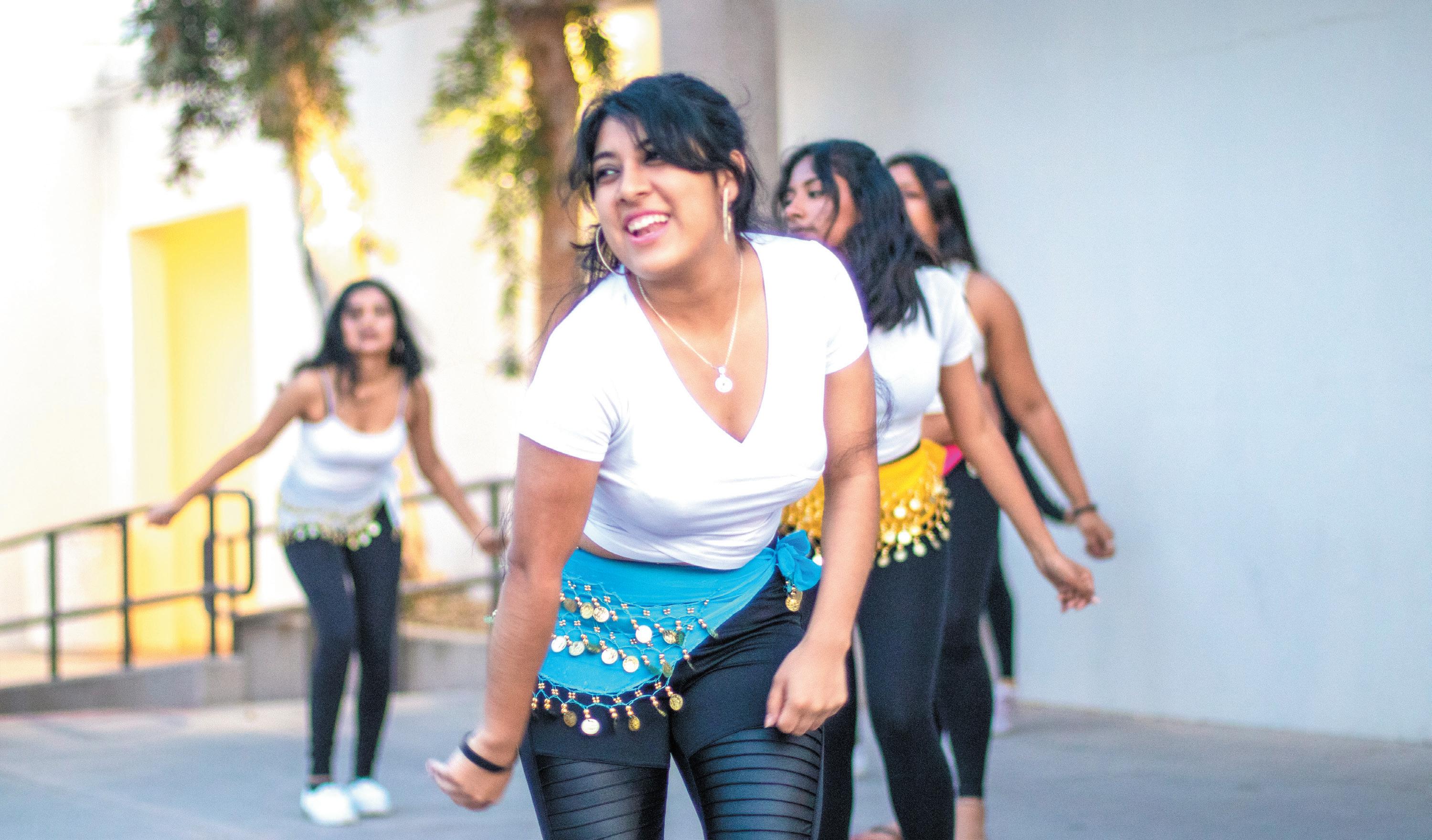NEWS 5
MONDAY, MARCH 9, 2020 | DAILY49ER.COM | @DAILY49ER | NEWS@DAILY49ER.COM
Behind the scenes: The vertebrae lab Thousands of preserved animals call the basement of the Hall of Science home.
By Madalyn Amato News Editor
I
MADALYN AMATO | Daily Forty-Niner
A water deer skull, top, is part of the vertebrae lab’s unique collection of skeletons and skins. Suellen Jacob, lab technician, pulls a frozen specimen, middle, out of her specialized refrigerator where she holds newly acquired animals before preparing them to become part of the vertebrae lab collection. Skulls of small rodents, above, tagged and associated with a matching stuffed animal in the drawers of the vertebrae lab.
n the basement of the Hall of Science, lab tables are lined with the skins of exotic animals. In another room, jars of amphibians are suspended in liquid. In another, cabinets are full of preserved animals. Behind the locked doors lay some of the world’s most exotic animal species. From an elephant skull to stuffed koalas, Long Beach State’s vertebrae lab has one of the most vast and varied collections of specimens for classroom and research use in the California State University system. Suellen Jacob, an instructional support technician, is the caretaker of the lab. Originally from the East Coast, Jacob was looking for a job that matched her interests in studying wildlife. “Since I was interested in collections, those jobs are super rare,” Jacob said. “If you really want one, you have to apply nationwide.” After receiving her master’s degree at the University of Cincinnati, Jacob decided to pursue a career where she could have hands-on experience with unique specimens. Some of the specimens date back to the founding of the university in 1949, others are brand new. Roadkill, donations from the community and animals from wildlife rehabilitation facilities are all sources of additions to the collection. Jacob said that the top animal supplier at the moment is the San Diego Zoo. “They take good care of their critters, but you know, it’s the end of life for everyone,” she said. “So about once or twice a year I’ll drive down there and they will hand over a bunch of carcasses.” Each specimen that comes to the lab goes through an extensive preparation process, carried out by Jacob and her graduate assistants. Once received, they are kept in freezers on the third floor of the HSCI separated by size and species. Right now, they are filled with birds, rodents and even a warthog head. Jacob then decided when the best time to begin prepping the specimen is and begins by defrosting the specimen. After the animal is defrosted, Jacob goes to work on skinning and removing the innards of the animal. Sometimes skeletons are kept depending on its rarity, otherwise, they are disposed of. The skins are then treated and dried accordingly. What remains is stuffed and prepped for classroom and research use. Jacob uses a variety of materials from cotton to wires to give the animal a “life-like” appearance.
Each animal gets the same treatment as long as they’re going in the “dry” specimen collection. Other creatures, like fish, amphibians and reptiles are kept in jars full of isopropanol, a less harsh and safer alternative to formaldehyde. “Being able to learn from this kind of stuff is really valuable,” Jacob said. “Educationally, I think this is really the best way to teach students about different animals and the differences between them.” Hannah Rabitoy is one of Jacob’s graduate assistants who is currently working on her master’s degree in biology. “I am considering going into teaching or writing research, so it’s great to just get to handle all these specimens,” Rabitoy said. However, the vertebrae lab doesn’t just serve students in the science department. “We also have research collections, which in total, I believe, we have approaching 40,000 preserved vertebrates,” Jacob said. “We also have used the collection’s specimens for faculty research.” Jacob also runs an online database that catalogs all specimens that come in and out of the lab. “Anyone around the world could search our records,” she said. “And specimen records are considered especially valuable because they’re backed up by an actual critter.” Jacob came to the university in 2012 just after the HSCI was built and said that the collection was worse for wear. “When I came here, most of them actually did not have much in the way of labels, they just had this little piece of paper that has a number on it, which makes it very difficult to sort break them up to be associated by the skin and then see where it goes,” Jacob said. Since she’s taken over, Jacob has begun cleaning out older, dated specimens that weren’t as well-preserved to make room for new items to add to the collection. “We have taken small collections from other institutions who were trying to clear out, they had a couple hundred, maybe 100 specimens,” she said. “Then, of course, we have to get rid of specimens and have to send them and further up the chain to the L.A. County Museum of Natural History.” For Rabitoy, the collection is giving her the chance to prepare for her future career. “We can learn so much information from these types of collections,” Rabitoy said. “It’s so great that we have such a nice, comprehensive collection here.” Jacob said she continues her work in the lab to benefit future generations of species. “It’s the study that’s associated with dead things, but the results of the research can benefit the living ones,” Jacob said.






